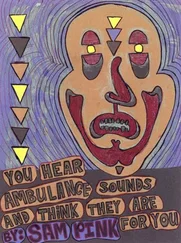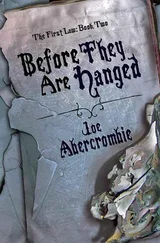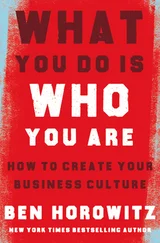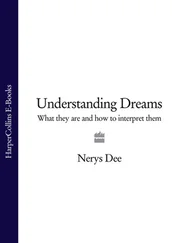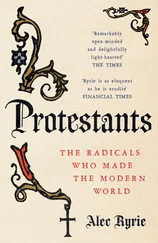Over the past two thousand years the Kytay tribe created the following powerful empires: Tan (sixth and seventh centuries AD), Liao (fourth to sixth century) Western Liao (twelfth century) as well as the empires of Genghis Khan, Babur, Tamerlane and Kokand Khanate.
Drawing on insights provided in the works by N.Y. Bichurin and L.Gumilev, I wrote several books the on outstanding role played by the Khitans in the era during which the Kyrgyz great power was established in Central Asia, i.e. from 840—960 AD.
It is important to emphasize in this context that the Khitans defeated the strong Uighur state, giving rise to rise the Kyrgyz Khanate. The basis of Kyrgyz Empire then included the following nations: the Kara Kyrgyz, which literally means large backbone Kyrgyz and from whom kings were selected, the Shor Kyrgyz, the Khakas-Kyrgyz, the Tuva-Kyrgyz and the Kyrgyz-Kaisak. The Kara-Kyrgyz themselves were made up of eight Kyrgyz sub-tribes.
A term that has been found to be closely associated with the name of Kytai is Kut which can mean happiness, blessing and star.
The Kyrgyz historian O. Aytymbetov 12 12 О. Айтымбетов «Кара Кыргыз»
in his famous book «Kara Kyrgyz» suggested that the word Kytai probably originates from the word «Kyt» which means metal alloy. Kyt was usually poured into the Saka, the so called king’s astragal, which seemed much bigger than bones of other animals. Apparently our ancestors greatly valued such things as the astragal, kept them with trepidation, involved them to a lot of traditions, ceremonies and national games. The largest astragal, called chuko in Kyrgyz, was made from a horse bone and called Saka or Royal. 13 13 «Кыргызские императоры Китая», http://www.proza.ru/2013/07/21/346
It has been associated with the Kara-Kyrgyz tribe, whereas the small chuko, made from a sheep’s bone, has been associated with the smaller Shor, Tuvinians, Khakas, Kyrgyz-Kaysaks tribes. I hope that our relatives will understand us correctly. The word Kara in the Kyrgyz language means big, and Kytai, Khitan make up the core of the Kara-Kyrgyz. This is also evident in the fact that the Khitan means iron, and the name translates as Liao – steel. All these observations indicate that the members of the Kyrgyz tribe of the Kytai had some form of handwriting as well as the necessary knowledge for the production of iron and steel. I have not tried to prove that all achievements and discoveries of mankind can be traced back to my tribe. However, what I am trying to outline are the deep roots of the Kyrgyz nation. I have provided detailed information on the matter in the Sanzhyra of the Kytai based on firm historical materials gathered from various ancient writings. These facts unavoidably lead us to the conclusion that this tribe shaped the core, the kyt or star of Kara-Kyrgyz nation.
Recently, the newspaper «Alibi» featured an article written by the historian N. Nusupov on its website. He suggested to readers that the Khitan allegedly were among the destroyers and enemies of the Kara-Kyrgyz empire, without backing up his claim with firm historical data.
I would like to advise Nusupov and other like-minded historians to carefully study the book «Search for an imaginary kingdom» by L. Gumilev (page 66), another book by the same author with the title «The end and the new beginning», p.117, as well as the book «Kyrgyz jana Kyrgyzstan Tarihi boyuncha tandalma emgekter», written by S. M. Abramzon 14 14 С. М. Абрамзон, «Кыргыз жана Кыргызстан тарыхы боюнча тандалма эмгектер» 437—438 pages.
(pp. 437—438) as well as the works of N. Y. Bichurin.
All these sources clearly show that the Khitan were close relatives of the Kyrgyz. From 704 to 756 AD, the representatives of the Kyrgyz Kytai tribe, more precisely, the Tordosh subtribe, together with other Kyrgyz clans created the great Central Asian state of Tordosh. It controlled areas including such cities as Shasha (Tashkent), Turpan, Beshbalyk, and Jeti-Suu and its capital was the city of Suyab (according with China chronicles, Kyrgyz named it as Ak-Beshim), based close to today’s city of Tokmok in modern Kyrgystan).
The Tordosh state was ruled by the following Khans:
Uchilik, the first king of Tordosh, 699 – 706 AD);
Soge, 706 – 711 AD;
Jen, 711 – 715 AD;
Suluk, 715 – 738 AD;
Kutcha, 738 – 739 AD;
Baga Tarchan, 739 – 742 AD;
Bilge, 742 – 753 AD;
Tenir-Ylmysh, 753 – 756 AD
This state or empire, as it should more aptly be described, maintained close relationships with the Tang empire. This was no coincidence, for the Tang empire was founded by the Kyrgyz Kytai tribe, a fact that I have covered in previous works, based on the research done by L. Gumilev, S. M. Abramzona and other prominent historians and authors.
In recent years, our Kazakh relatives have made considerable efforts in order to prove that the Tordosh state belonged to the Kazakh tribe. However, you will not find any solid evidence for this in historical documents, moreover the Kazakh Sanzhyra does not make any reference to the Tordosh tribe. A growing number of historians have moreover claimed that the Tordosh state was founded by Semites. They suggested that the use of a variant of the modern Turkish term «Turk» – «Turuk» in Kyrgyz, which refers to the practice of circumcision – implied that Tordosh rose under the influence of Arab, Persian kings, who embraced Islam.
However, this is not true, because in that time the eight Kyrgyz subtribes of the Kitay had not yet been Islamized but were adherents of Tengirism.
Let me also briefly mention the historic battle which took place between the adherents of Tengrianism and the Kyrgyz Muslims and the Arabs who came to aid of the latter in 751 AD, in Talas. The Kyrgyz Muslims were also supported by the Turuk-Karluk who originated from the Uighurs, while the Tengrists received assistance from the soldiers of the Tang empire, who were led by the Khitan. The battle ended after the two sides reached a peace agreement. For further information, I recommend L. Gumilev’s book 15 15 Л Гумилев, «Конец и новое начало», 98 page.
«The end and new beginning,» p. 98.
When the Western Liao Empire, ruled by Ye-lu Dashi, was defeated by the Manchurians in 1125, Ye-lu Dashi moved to Central Asia, where he restored his kingdom. During that time some parts of Kyrgyz had started to mix with the Arabs, Persians, Tajiks, Uighurs which produced such tribes as the Kandy, Kipchak, Teyit, Boston, and Doolos, who converted to Islam. Due to the fact that their foreskin was circumcised, they were called Turuk, or Turks.
(see Shakarim Kudaiberdi uulu 16 16 Шакарим Кудайберди уулу, «Турк Кыргыз Казак Хем Хандар Чежиреси», page 74.
«Turk Kyrgyz Kozack Hem Handarov shezhiresi», pp. 74, L.Gumilev «Search for an imaginary kingdom», p. 6, S. M. Abramzon «Kyrgyz jana Kyrgyzstan Tarihi boyuncha tandalma emgekter», p. 32 333.)
The tribe called Doolos (Telenguts) originated from the Kalmaks, according to several historical sources. In the world history they are known as Sart-Kalmak. The basic of Kalmaks were the Uighurs (see Shaakarim Kudaiberdiev uluu 17 17 Шаакарим Кудайберди уулу «Турк кыргыз-казак хем хандар шежиреси», 74 page.
, Kenesh Zhusupov «Kyrgyzdar,» Bahadur Khan Abulgazi bin Arab Muhammeddin book «Tїrk sanzhyrasy», page 28.
Another big clash between the left wing of the Kyrgyz, the Tengrists, and the Kyrgyz-Turuks and Arabs took place in 1141 near Samarkand. This time, the Turuks were defeated. Historians have explained the outcome of the battle as a result of the assistance the Kyrgyz tribe of the Khitan received from Manchuria as well as the Khitan from the Qing Empire («Materials on the history of Kyrgyz and Kyrgyzstan», 76) 18 18 «Материалы по истории кыргызов и Кыргызстана», page 76
Читать дальше

